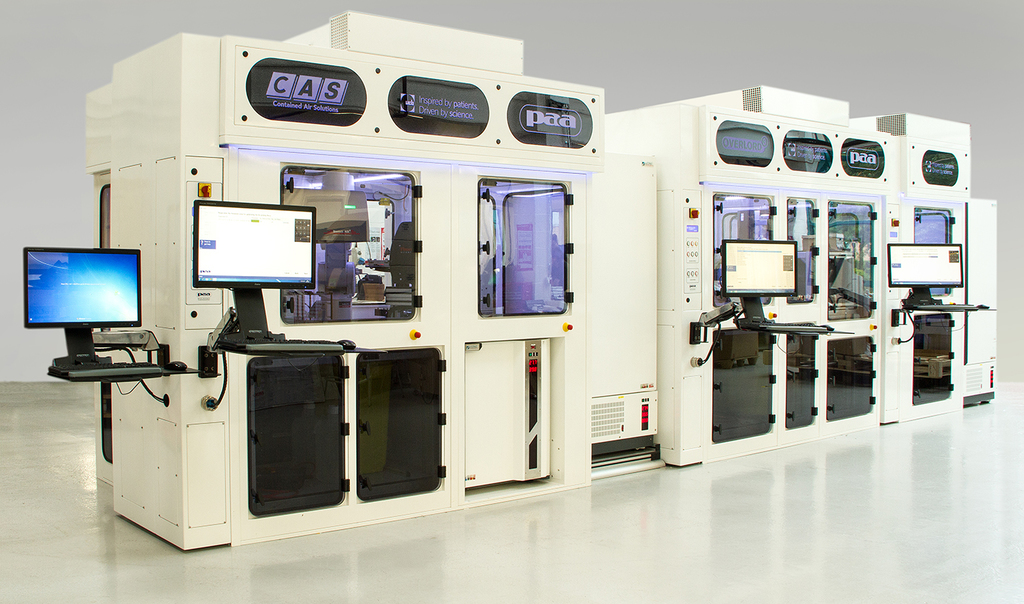
 |
Charlotte Stonestreet
Managing Editor |
| Home> | AUTOMATION | >Robots | >Testing cells by the billion |
Testing cells by the billion
17 August 2016
Built around a Mitsubishi Electric robot, a workcell designed and built for UCB by Peak Analysis and Automation (PAA) enables the screening of billions of antibody producing B cells.

The workcell operates by combining high-throughput cell culture screening and identification with the isolation of single antigen specific B cells using a proprietary technique known as the ‘fluorescent foci' method. The robot facilitates extremely efficient interrogation of the natural antibody repertoire. In a typical early stage screening campaign, a billion antibody producing B cells can be screened to find the ones with some of the desirable properties, a number that would be all but unimaginable if manual techniques were used.
“The workcell’s efficient sampling allows the discovery of those few antibodies, which have required characteristics,” explains Dr Malcolm Crook of PAA.
“The robot has to manipulate microplates containing the cells between several work stations, each time using a multi axis movement. It also has to synchronise its movements with other functions within the workcell,” says Dr Malcolm Crook of PAA.
The Mitsubishi robot is highly dexterous, having six axes of movement. Further, for this application it has been mounted on a ballscrew-driven travel base so that it can move between two locations within the workcell to perform different tasks. This linear movement is fully integrated with the robot’s own motion axes, using a Mitsubishi SSCNet high speed motion control network. PAA fitted the robot with a standalone controller with which the SSCNet is integrated, although Mitsubishi also uniquely offers robots that can be controlled via an integrated PLC rack-mounted robot controller.
The robot is a Mitsubishi model RV7-FLM-D1-S15, a unit that is popular for a range of applications from life sciences and precision assembly to manufacturing and materials handling. It weighs in at less than 67kg, but can lift 7kg, has a reach of over 900mm and a positioning accuracy of 0.02mm. Its waist axis can rotate through ±240deg, which gives it an all-around working envelope.
Significantly this robot model is rated to IP67, so can be used in demanding environments. It also offers very fast cycle times and has many safety features such as settable limits for speed, position and torque.
Crook again: “The workcell is not only for human-targeted research but for the creation of research tools for proof-of-concept projects. Like all of our systems, the workcell is very flexible and should have a long working life as it can be easily reconfigured for new projects.”
- AI improves maintenance management for robots
- Cool under pressure
- Small & mighty
- Futureproof PLC
- Mitsubishi Electric & Radiflow cooperation enhances industrial cyber security
- Dust & splash proof
- Cloud based SCADA
- Mitsubishi Electric's FX3S creates new PLC category
- HMI for extreme environments
- Mitsubishi adds second day to Future Manufacturing Event
- Balls to Gravity
- ROBOTS GIVE FASTER CELL TOOL CHANGE TIMES
- ROBOT FOR DELICATE ASSEMBLY
- NUMBER OF ROBOTS IN UK ON THE RISE
- The future is bright - The future is automation!
- High Demand For Grant
- More Capacity, Less Space
- FREEBIRD - THE THIRD DIMENSION
- PRECISION ROBOT CELL FOR THE PHARMACEUTICAL INDUSTRY
- ROBOT SALES REACH ALL TIME HIGH


















